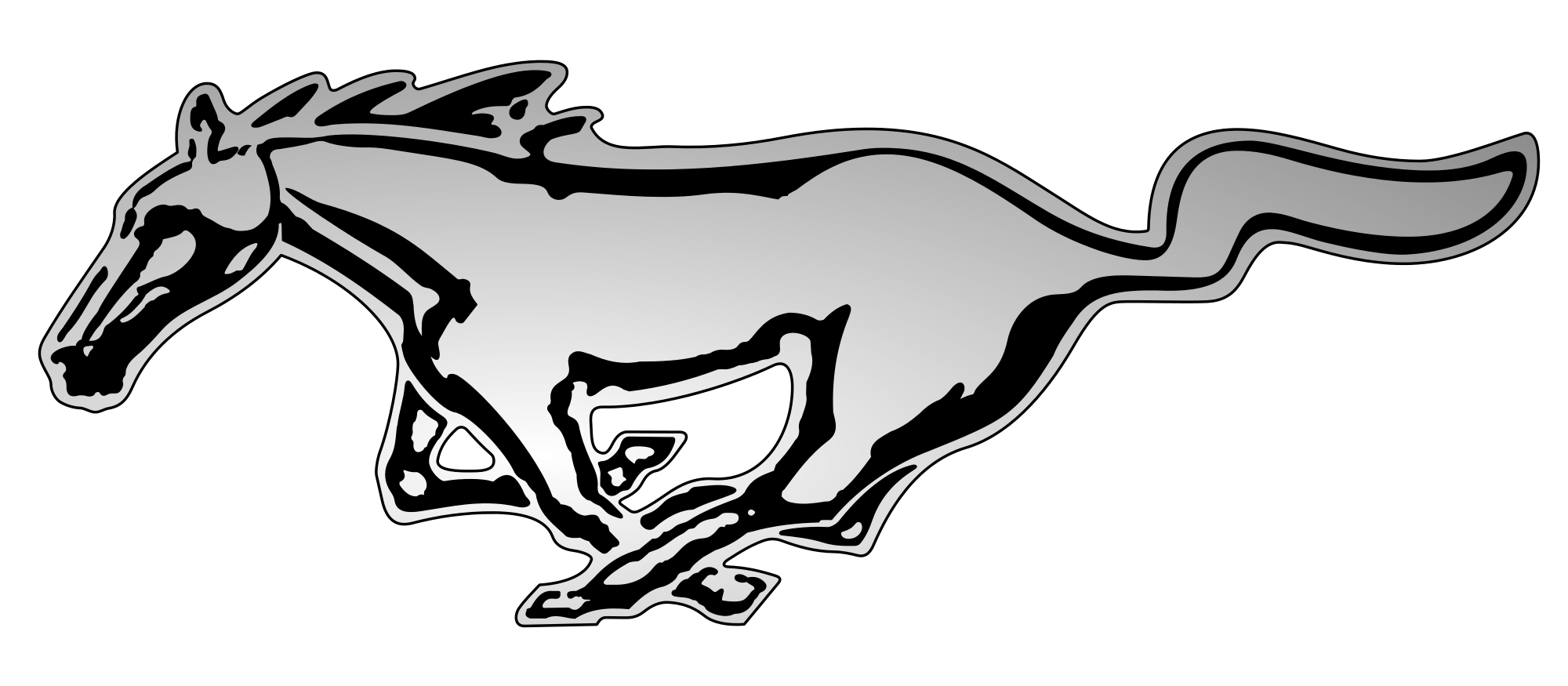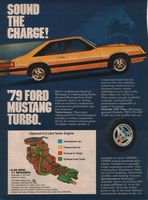 |
1979 Mustang
The Mustang is all new |
Click on an image below to
enlarge










The 1979 model year Mustang was based on the
larger Fox platform that was initially developed for the Ford
Fairmont and Mercury Zephyr twins that debuted in the 1978 model
year. The larger body meant the interior offered more space for four
passengers, especially in the back seat, as well as a larger
capacity trunk and a bigger engine bay. Body styles included a coupe
(notchback) and hatchback. Two trim levels were available and
included the base model and the more luxurious Ghia model.
In addition to the base & Ghia trim levels, a Cobra appearance
package also made its debut and would continue through both the 1980
& 1981 model years. The all-new 1979 Cobra (17,579 produced)
featured black trim and grille area, chrome door handles, stainless
steel lock sets & antenna, aluminum roof drip rail, body colored
sail panels, black lower body-side paint, colored coordinated dual
pinstripes in the wraparound body-side moldings and bumper grooves,
an optional snake decal for the hood and Cobra lettering on the
doors. There was no rear spoiler on the 1979 models (except on the
mid year introduction of the Indianapolis Pace Cars).
On May 27th, 1979, the
all-new Mustang was chosen as the Official Pace Car of the
Indianapolis 500. Ford commemorated this event with a mid-year
addition "Indy 500" Pace Car model (10,478 produced). The two-tone
Pewter and Black colors were complimented with Orange and Red
graphics. The front end featured a unique front air dam with fog
lights, and a full length cowl type hood scoop, while the rear end
got the new for '79 rear spoiler (all of these additions carried
over to both the '80 & '81 Cobra). The black interior featured
Recaro seats with patterned Black and White inserts. Available were
the 2.3 L Turbo with mandatory four-speed manual transmission or the
5.0 L V8 with either an overdrive 4-speed manual or three-speed
automatic transmission. The production cars included a sunroof.
However, the three actual pace cars were fitted with a T-roof by
Cars & Concepts of Brighton, MI. The T-roof option would not become
an available option until the 1981 model year.
Engines for the 1979-1982 models included the 88 hp (66 kW) 2.3 L
Pinto inline-four, 109 hp (81 kW) 2.8 L Cologne V6 (made by Ford of
Germany), and the 140 hp (104 kW) 302 cu in (4.9 L) Windsor V8;
which was marketed as a 5.0 L engine and front fenders badged as
such. All were carried over from the Mustang II line. Shortly after
the model year started a 85 hp (63 kW) 3.3 L straight-six engine was
available. Supplies of the 2.8 L V6 proved inadequate leading to it
being discontinued in late 1979. A new 132 hp (98 kW) 2.3 L turbo
four-cylinder, debuted that offered similar horsepower to the V8.
The automaker had plans this engine would usher in a new era in
performance. The 2.3 and 2.3 Turbo, as well as the V8 models could
also be optioned with the newly developed TRX handling suspension
that included Michelin 390 mm tires and specific metric wheels.
Following the second oil crisis in 1979, the 302 cu in (4.9 L) "5.0
L" engine was dropped in favor of a new 255 cu in (4.2 L) V8 due to
its better fuel economy. It was the only V8 offered in 1980 and
1981. Basically a sleeved down 302, the 4.2 L V8 had restrictive
heads and produced 120 hp (89 kW), the lowest power ever for a
Mustang V8. The 4.2 L was mated only with the three-speed automatic
transmission. This meant the 2.3 L Turbo 4 was the sole
"performance" engine. The Turbo 4 was plagued with reliability
issues from its release. Inadequate lubrication led to premature
turbo failure and some engines caught fire. It was listed as an
option through 1981, but dropped for 1982, although it was still
available in Canada. This engine would return in the new-for-1983
Turbo GT. The "Traction-Lok" limited slip differential was available
for the first time in 1981, with all engine combinations. A
five-speed manual option arrived late during the 1980 model year,
originally only in the 2.3-liter four-cylinder engines.
|